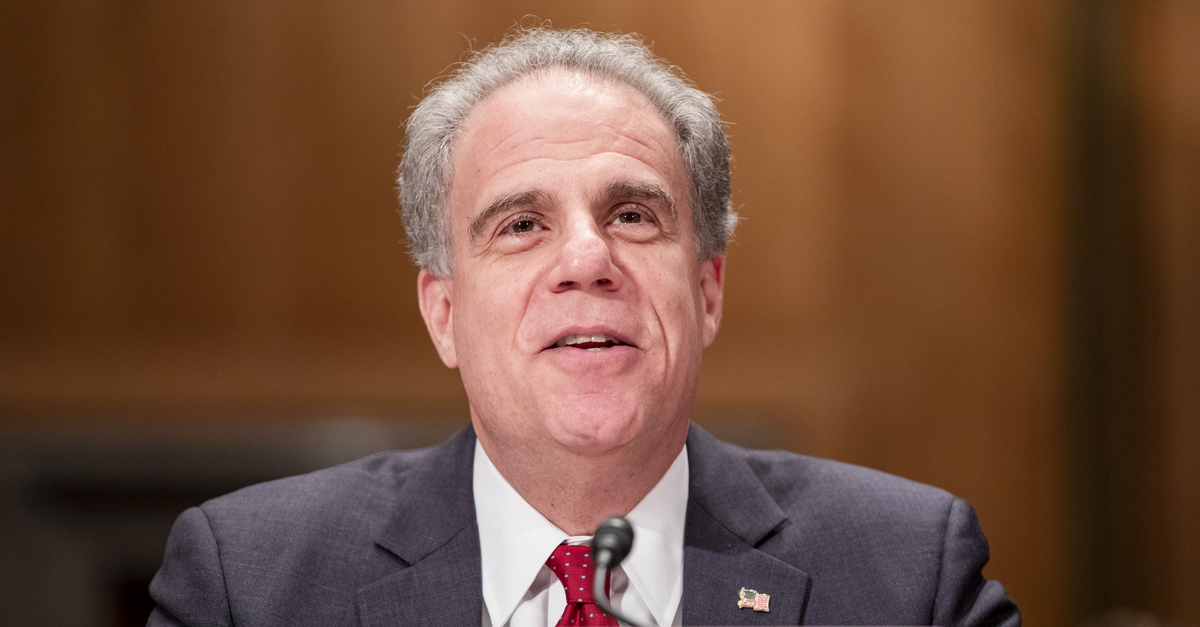
DOJ IG Horowitz
Inmates at a federal prison in Texas pulled a fast one on prison guards by escaping with the help of body doubles–both real and fake.
According to a recent report from the U.S. Department of Justice (DOJ) Office of Inspector General (OIG), four people were able to successfully abscond and evade detection from the Federal Bureau of Prisons (BOP) Federal Correctional Complex (FCC) Satellite Prison Camp (SPC) in Beaumont, Texas for over half a day before staff even realized what had occurred right under their noses.
Inspector General Michael Horowitz noted that DOJ OIG had taken stock of “multiple investigations involving prison escapes” in a letter-style report addressed to BOP Director Michael Carvajal, a Trump era holdover and political appointee who was installed in his current position by then-Attorney General Bill Barr in Feb. 2020.
“As Director, Mr. Carvajal oversees the operation of 122 Bureau of Prisons facilities, six regional offices, two staff training centers, 10 contract facilities, and 22 residential reentry management offices with oversight and management of approximately 37,500 staff and approximately 151,000 inmates,” Carvajal’s government bio notes.
The Biden White House has, so far, made no public inclination to replace or consider replacing hundreds of Trump appointees such as Carvajal.
In the report, Horowitz focuses on the situation at the forced labor camp on the south-easternmost edge of the Lone Star State.
There, the DOJ OIG notes, the four inmates escaped using dummies and by having other inmates impersonate them while guards went on with their duties entirely unaware for over 12 hours.
The 5-page report notes the following details [emphasis added]:
The inmates were ultimately discovered missing during a stand-up count at 10:00 a.m. We found that the outer doors of separate buildings within the SPC at FCC Beaumont were unsecured in that they were unlocked, were unmanned, were not equipped with surveillance cameras, and had either nonfunctioning alarms or alarms that could be manipulated by inmates, even during times when inmates were not permitted to move freely within the SPC, such as during counts and at nighttime. In addition, we were told that inmates sometimes place dummies in their beds or physically place themselves in other inmate beds during inmate counts. We found that unsecured doors allow inmates to move freely within the SPC even when they were not permitted to do so and, thus, make it easier for them to both pose as other inmates during counts and escape from the SPC.
“We were told that as long as inmates return to their assigned building and bunk before the correctional officers conduct stand-up inmate counts, they can escape the SPC undetected,” the report continues.
None of the inmates or jailers in question were identified by name in the report. Nor were the number of dummies and real-life body doubles specified. The report also didn’t mention how inmates were able to construct full-on body-size dummies without the knowledge of prison staff or administration.
The inmates were finally discovered missing after a “morning count” of prisoners the day after they had escaped.
“The OIG has further found that the security risks identified above increase the risk that inmates will bring contraband into FPCs and SPCs,” the report notes. “We were told that two of the inmates who escaped the SPC at FCC Beaumont left the facility to obtain contraband.”
The DOJ OIG stopped short of assigning any kind of formal blame or suggesting any kind of sanction or punishment for the government agents who were duped by the escapees.
Horowitz explains the agency’s reasoning:
The OIG’s investigation at FCC Beaumont did not substantiate allegations that Correctional Officers violated policy, because (1) the evidence showed that the inmates who escaped may have had other inmates pose as them or placed dummies in their beds to deceive Correctional Officers during the nighttime counts; and (2) the evidence showed that the Correctional Officers likely complied with BOP and FCC Beaumont policy when conducting the nighttime counts.
Read the full report below:
[Images of Horowitz by Samuel Corum/Getty Images, Carvajal by Tom Williams-Pool/Getty Images]